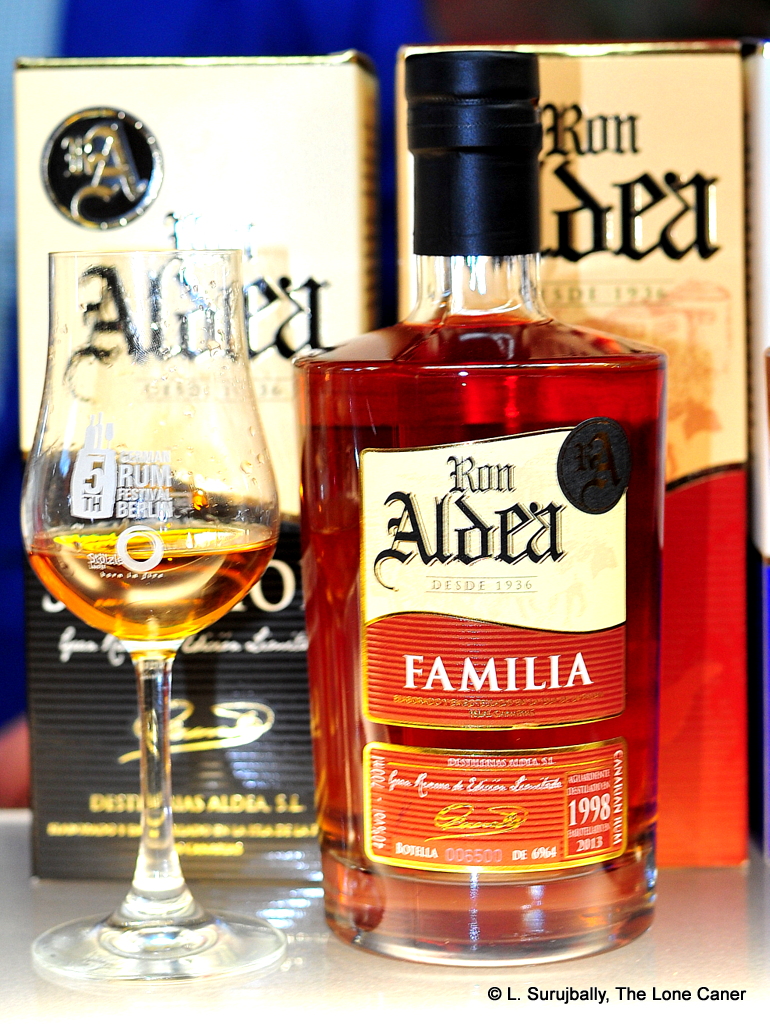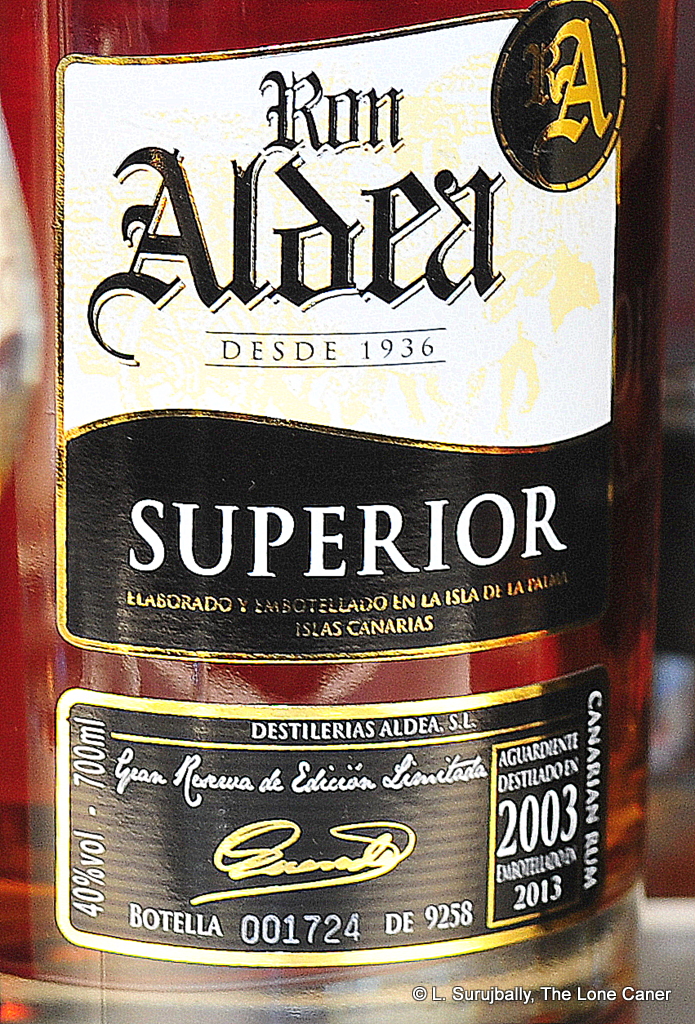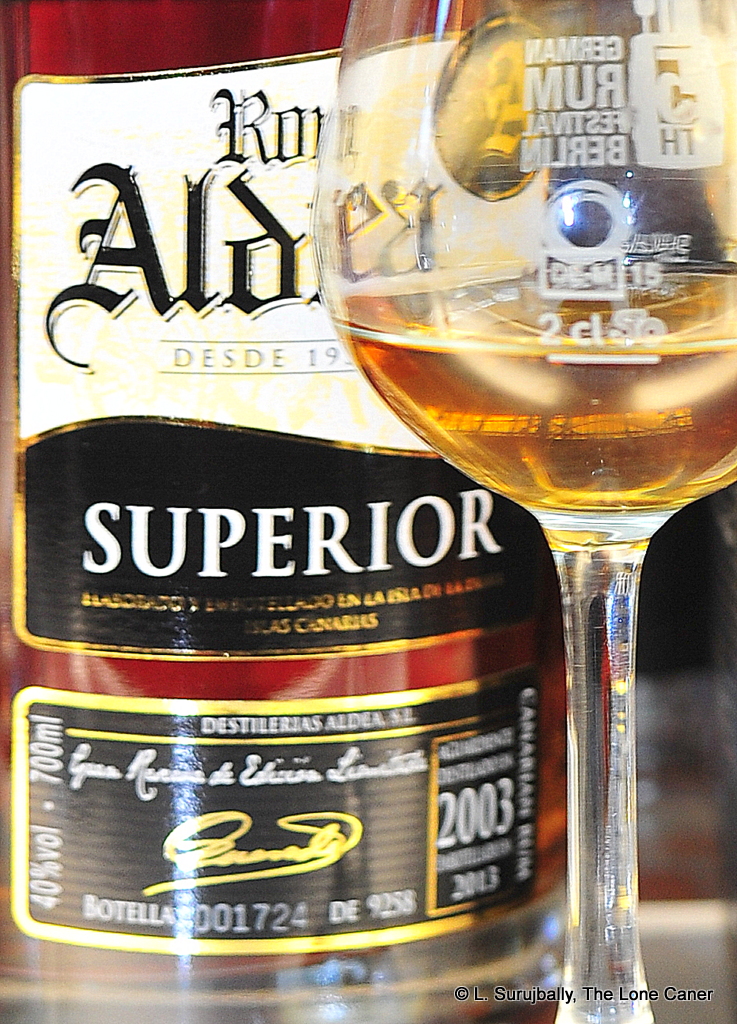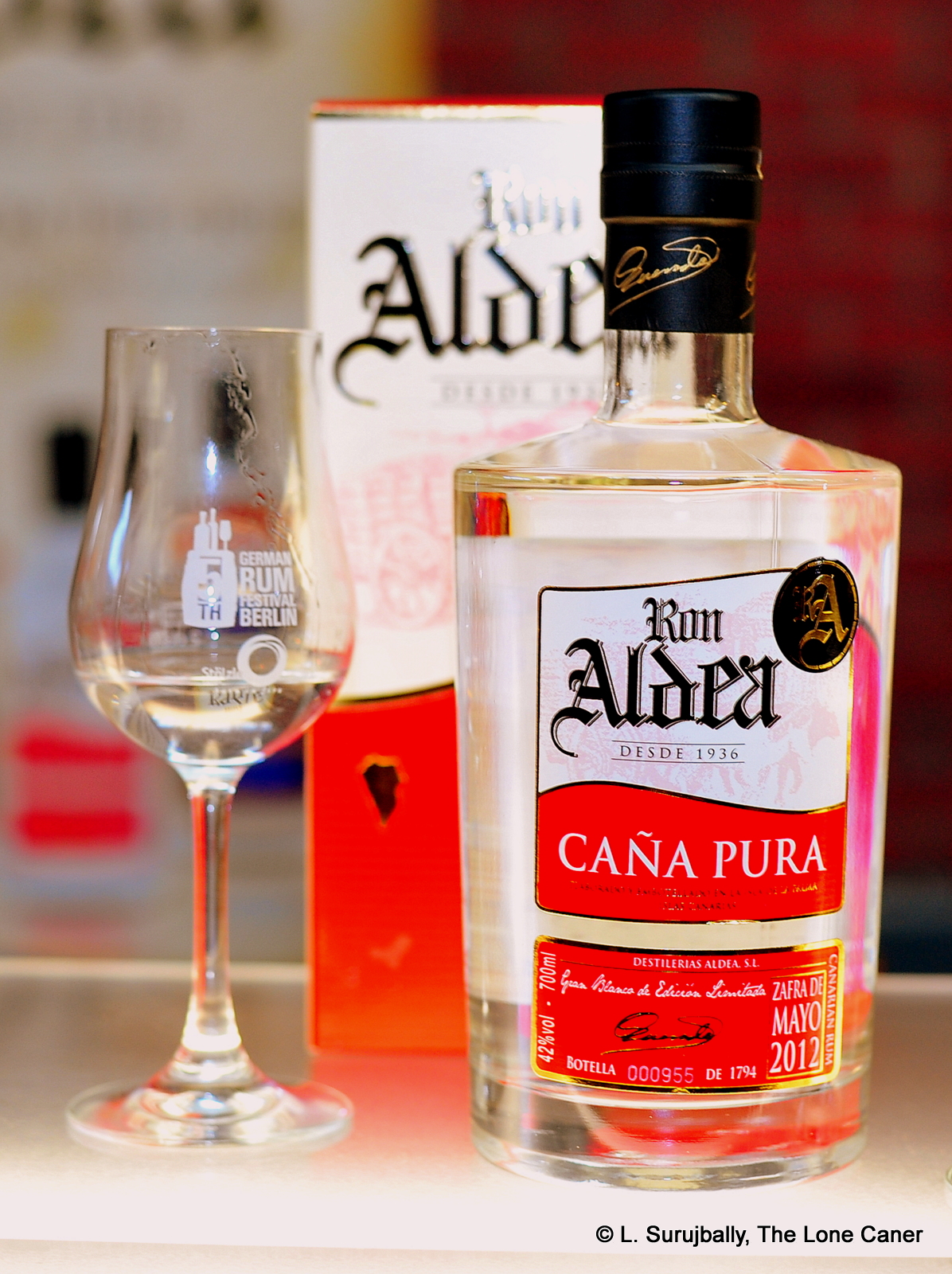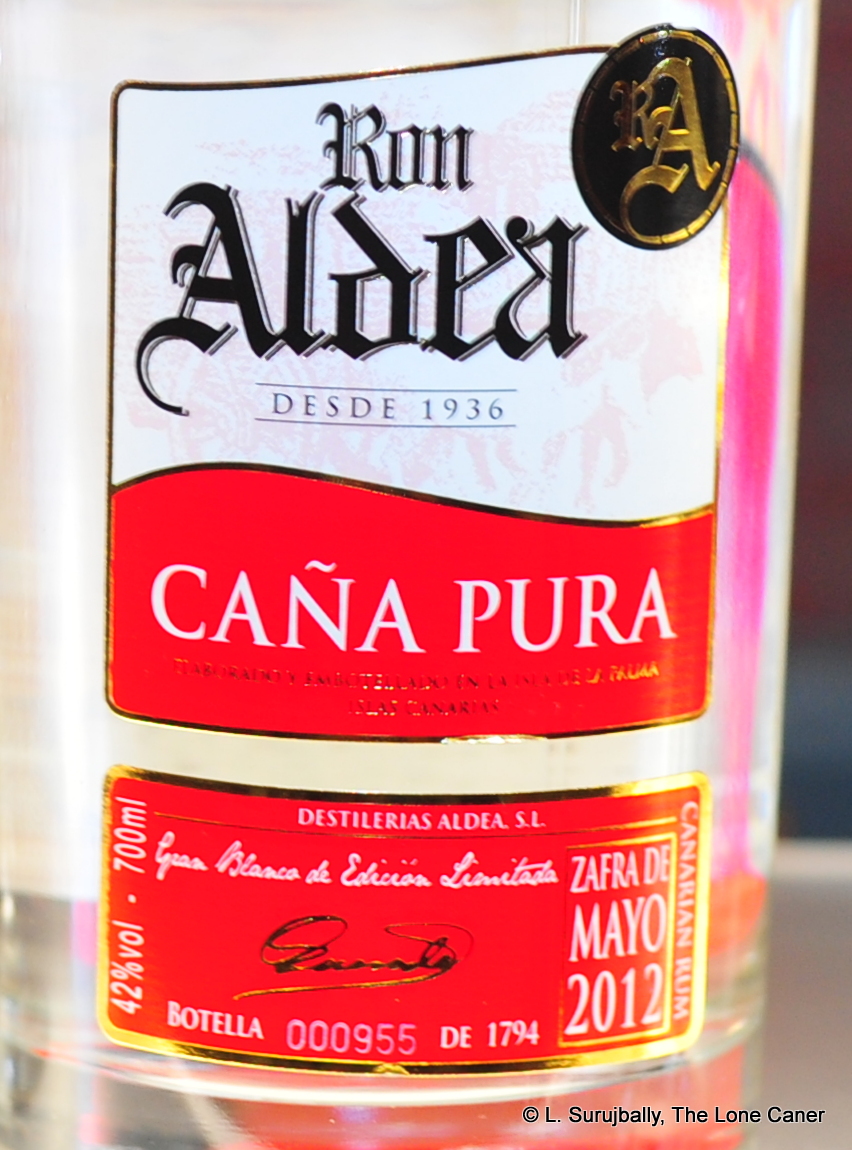A unassuming and ultimately flawed 22 year old rum
#324
As one goes through the line of the various Ron Aldeas, which are serviceable mid-tier rums, one notices that the clear agricole profile gets progressively more lost, which I attribute to primarily the strategy of using variously toasted barrels in varying proportions. Depending on whether you want an agricole-style rum to taste like one, this may not be to your liking. This rum does not hail from the French islands or subject to the AOC (its influences are more Spanish than anything else), and therefore what we are tasting is something from elsewhere – the Canary Islands in this instance. No doubt different taste and blending and ageing influences come to bear when makers from other parts of the world approach the same distillate.
As usual, some general information before we delve into the tasting notes. The Tradición is a cane-juice-derived, column still product, bottled at 42% with a 3428-bottle outturn. The 1991 edition I tried came out in 2013, making it a 22 year old, and was matured in barrels of different kinds of oak, with differing levels of toast; for the final two years the rum is transferred to used barrels of red wine (not identified) to add finish. Therein lies a problem because while that finishing regime does add some complexity, it also adds sweetness; and when I read that Drejer measured 27 g/L (which is assumed to be sugar), I can understand why it was issued at a slightly higher proof point.
That level of sugar is not immediately apparent. Somewhat at a tangent, nosing the bronze rum makes one wonder immediately where the agricole notes went off and hid themselves, because as with the Ron Aldea Familia (and to a lesser extent the Superior), the clean grassy and herbal smells that characterize the profile are utterly absent. Still, what was presented wasn’t bad – peaches in cream, toffee, nougat, white toblerone, almonds were immediately apparent, with fruitier raisins and dried fruits coming up from behind, probably courtesy of those wine barrels. Not a very potent nose, just a soft and warm one.
I noted above that the rum tested positive for sugar. On the palate, that was unavoidable (my original handwritten notes, made before I knew of Drejer’s results, read “wht’s wth sweet? ths all cmng from wine barrels?”). It may be a comfort to those who don’t mind such things that enough flavours remained even after that inclusion to make for an interesting sip. Initially there was the same vanilla, oak and leather, with a warm, smooth mouthfeel, and as it opened up the fruits came out and did their thing, presenting green apples, raisins, some cider and red grapes…just not what they could have been. They felt dampened down and muffled, not as crisp and clear as they might have been. It all led to a finish that was warm and hurriedly breathy as a strumpet’s fake gasps – and alas, like that seemingly spectacular activity, the experience was far too fleeting, without anything new to add to the profile as described.
Of the four Aldeas I tried in tandem, this is undoubtedly the best — a warm, fragrant, almost gently aged rum, lacking the fierce untrammelled power and purity of a stronger drink. The finishing in wine barrels also adds a little something to the overall experience (which the additives then frustratingly take away). In these characteristics lie something of the rum’s polarizing nature – those who want a beefier rum will think it’s too soft; those who see “cane juice origin” and want that kind of herbal taste and don’t get it, will be miffed; and those who want a clean rum experience will avoid it altogether. The rum is rather light, and the sweetness imparted by the finish and the additives work against the delicacy of the distillate, deadening what could have been a better drink, even with the extra two percentage points of proof over the standard.
But all that aside, it’s not entirely a bad rum; as with the Centenario 20, various Panamanians or soleras (which this is not, but the similarity is striking), one simply has to walk into it knowing one’s preferences ahead of time — then buy if it’s one’s thing, try if curious, avoid if turned off. Starting the sip with preconceived notion as to what one wants, what the rum is, or what the makers seek to achieve, might just be a recipe for disappointment. And that would be unfair to what is, as noted in my one line summary, quite a pleasant and unassuming 20+ year old product. Strength aside, my only real beef with the thing is the utterly unnecessary adulteration – by doing so, Aldea, for all their skill in bringing this well-aged rum to the party, have left several additional points of easily attainable quality behind on the table and diminished my ability to provide an unqualified endorsement for a rum that should have been better.
(84/100)

